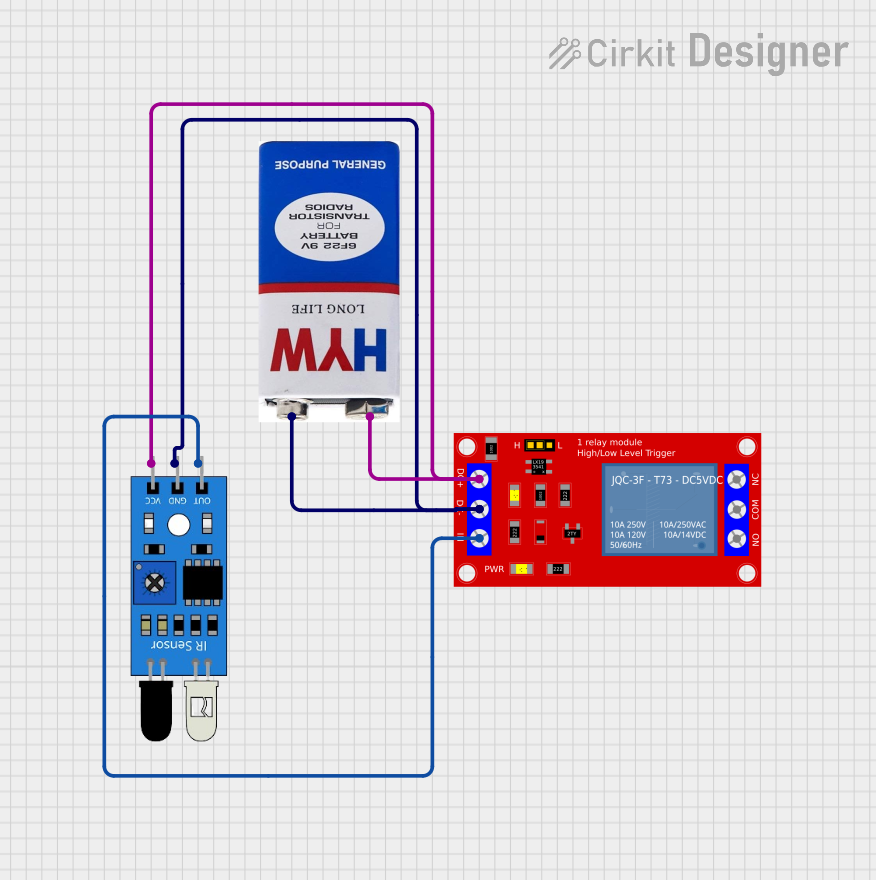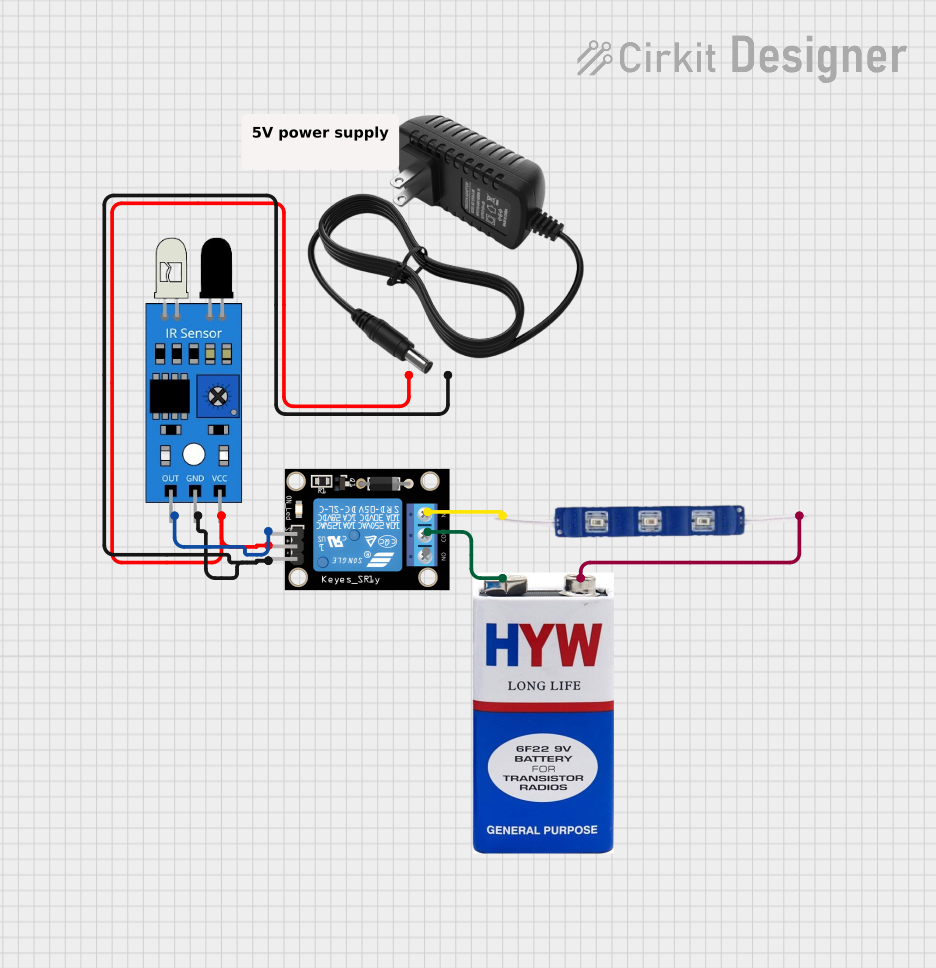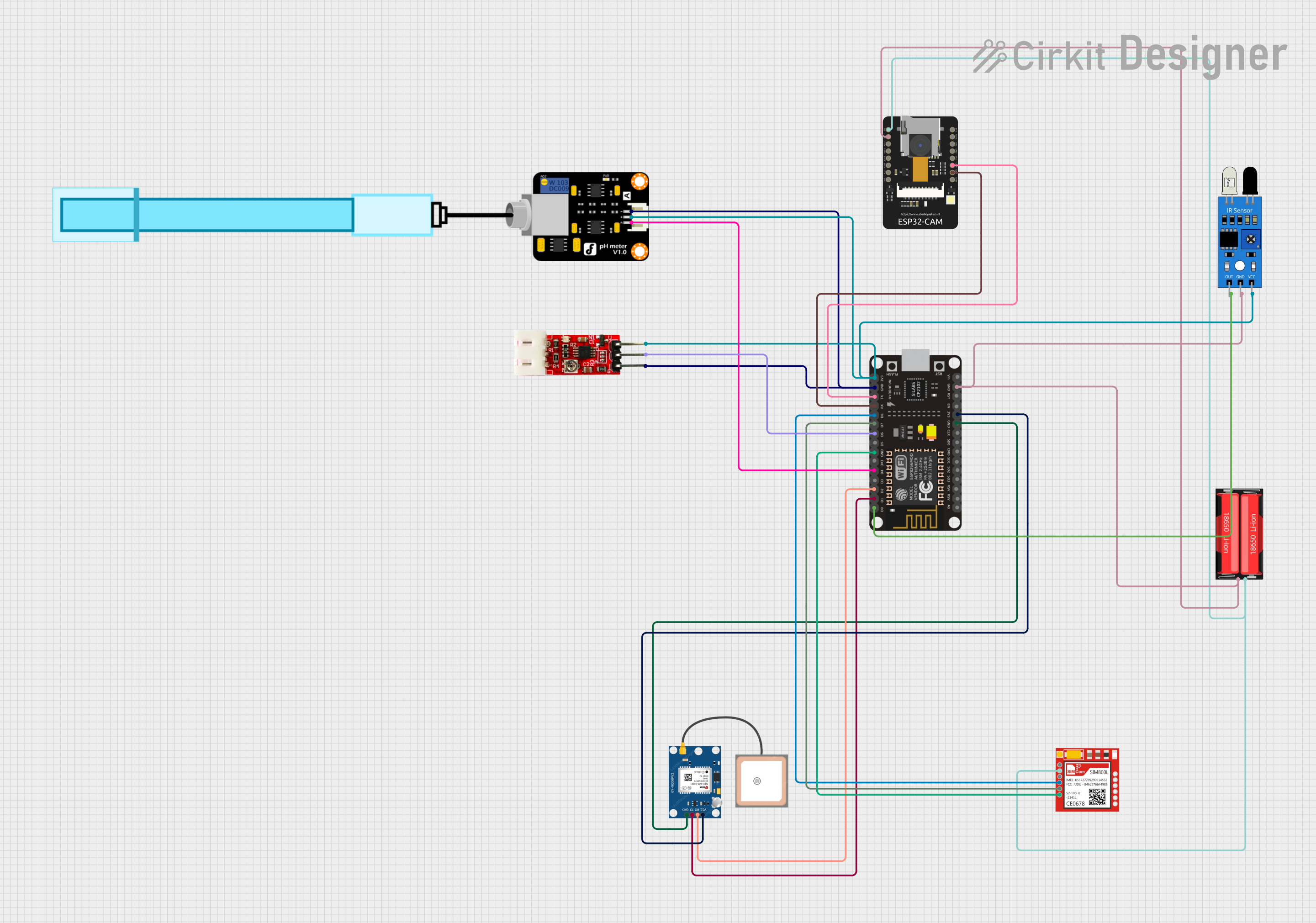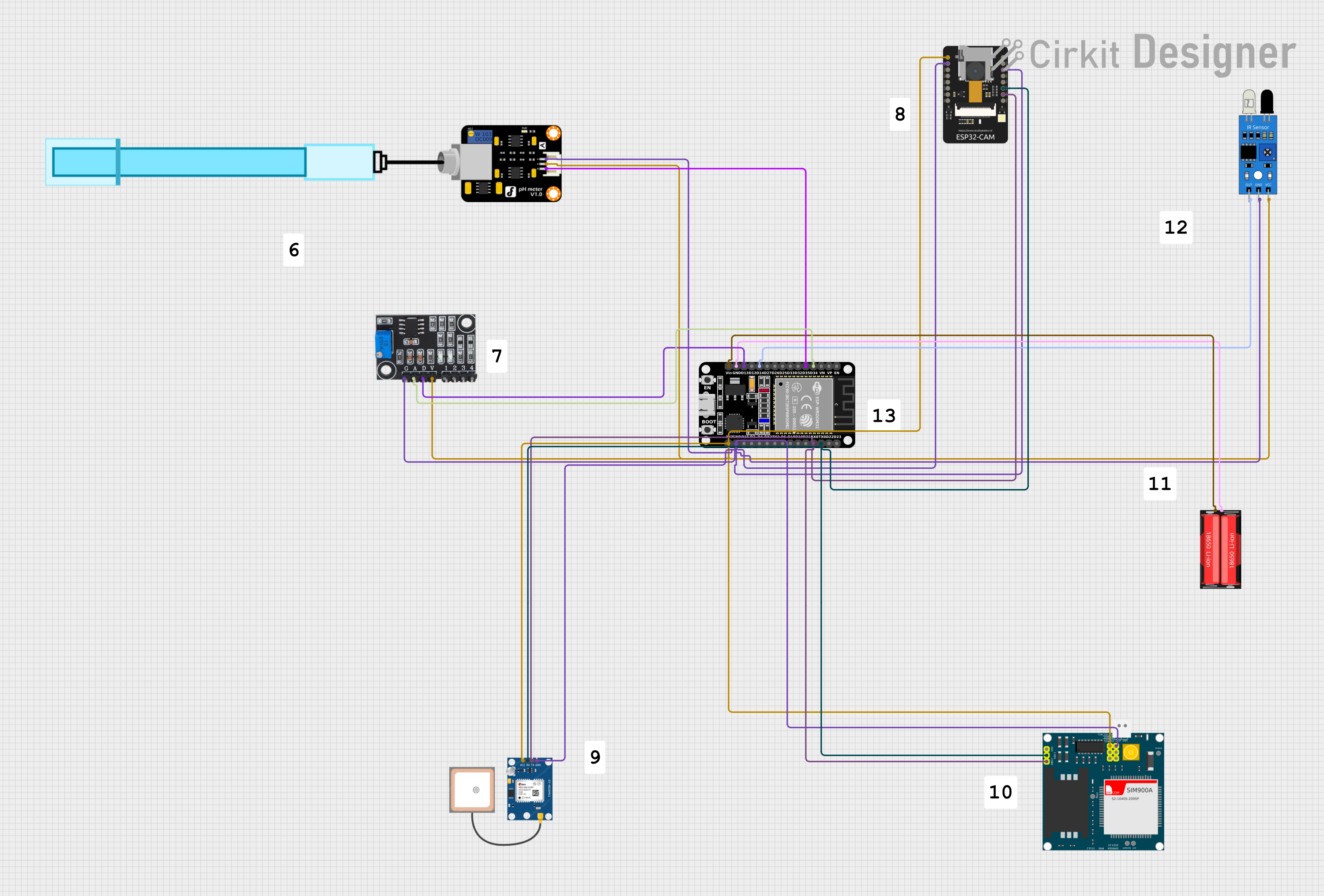
How to Use IR Sensor Module: Examples, Pinouts, and Specs

 Design with IR Sensor Module in Cirkit Designer
Design with IR Sensor Module in Cirkit DesignerIntroduction
The IR Sensor Module (Manufacturer Part ID: IR-OBS-3PIN) is a versatile electronic component designed to detect infrared radiation. It is commonly used for proximity sensing, motion detection, and object detection. The module consists of an IR transmitter (infrared LED) and an IR receiver (photodiode or phototransistor), which work together to detect objects or changes in the environment by analyzing reflected IR signals.
Explore Projects Built with IR Sensor Module

 Open Project in Cirkit Designer
Open Project in Cirkit Designer
 Open Project in Cirkit Designer
Open Project in Cirkit Designer
 Open Project in Cirkit Designer
Open Project in Cirkit Designer
 Open Project in Cirkit Designer
Open Project in Cirkit DesignerExplore Projects Built with IR Sensor Module

 Open Project in Cirkit Designer
Open Project in Cirkit Designer
 Open Project in Cirkit Designer
Open Project in Cirkit Designer
 Open Project in Cirkit Designer
Open Project in Cirkit Designer
 Open Project in Cirkit Designer
Open Project in Cirkit DesignerCommon Applications and Use Cases
- Obstacle detection in robotics
- Line-following robots
- Motion detection systems
- Automatic door opening systems
- Industrial automation for object counting or sorting
- Security systems for intrusion detection
Technical Specifications
The following table outlines the key technical details of the IR Sensor Module:
| Parameter | Value |
|---|---|
| Operating Voltage | 3.3V to 5V |
| Current Consumption | 20mA (typical) |
| Detection Range | 2cm to 30cm (adjustable) |
| Output Type | Digital (High/Low) |
| Output Voltage (High) | ~Vcc (3.3V or 5V, depending on input) |
| Output Voltage (Low) | ~0V |
| Dimensions | ~3cm x 1.5cm x 1cm |
| Operating Temperature | -25°C to 85°C |
Pin Configuration and Descriptions
The IR Sensor Module has a 3-pin interface. The pin configuration is as follows:
| Pin | Name | Description |
|---|---|---|
| 1 | VCC | Power supply pin. Connect to 3.3V or 5V. |
| 2 | GND | Ground pin. Connect to the ground of the circuit. |
| 3 | OUT | Digital output pin. Outputs HIGH or LOW based on detection. |
Usage Instructions
How to Use the IR Sensor Module in a Circuit
- Power the Module: Connect the
VCCpin to a 3.3V or 5V power source and theGNDpin to the ground of your circuit. - Connect the Output: Connect the
OUTpin to a digital input pin of your microcontroller or directly to an external circuit (e.g., an LED or buzzer). - Adjust the Sensitivity: Use the onboard potentiometer to adjust the detection range. Turn clockwise to increase the range and counterclockwise to decrease it.
- Test the Module: Place an object within the detection range and observe the output. The
OUTpin will go LOW when an object is detected and HIGH when no object is detected.
Important Considerations and Best Practices
- Ambient Light Interference: The module may be affected by strong ambient light. Use it in controlled lighting conditions for optimal performance.
- Distance Calibration: Always calibrate the detection range using the potentiometer before deployment.
- Power Supply: Ensure a stable power supply to avoid erratic behavior.
- Mounting: When using the module in robotics or automation, ensure it is securely mounted to avoid misalignment of the IR transmitter and receiver.
Example: Connecting to an Arduino UNO
Below is an example of how to connect and use the IR Sensor Module with an Arduino UNO:
Circuit Connections
- Connect the
VCCpin of the IR Sensor Module to the 5V pin of the Arduino. - Connect the
GNDpin of the IR Sensor Module to the GND pin of the Arduino. - Connect the
OUTpin of the IR Sensor Module to digital pin 2 of the Arduino.
Arduino Code
// IR Sensor Module Example Code
// This code reads the output of the IR Sensor Module and turns on an LED
// when an object is detected.
#define IR_SENSOR_PIN 2 // Define the pin connected to the IR sensor's OUT pin
#define LED_PIN 13 // Define the pin connected to the onboard LED
void setup() {
pinMode(IR_SENSOR_PIN, INPUT); // Set the IR sensor pin as input
pinMode(LED_PIN, OUTPUT); // Set the LED pin as output
Serial.begin(9600); // Initialize serial communication for debugging
}
void loop() {
int sensorValue = digitalRead(IR_SENSOR_PIN); // Read the sensor output
if (sensorValue == LOW) {
// Object detected
digitalWrite(LED_PIN, HIGH); // Turn on the LED
Serial.println("Object detected!");
} else {
// No object detected
digitalWrite(LED_PIN, LOW); // Turn off the LED
Serial.println("No object detected.");
}
delay(100); // Small delay for stability
}
Troubleshooting and FAQs
Common Issues and Solutions
The module is not detecting objects:
- Ensure the
VCCandGNDpins are properly connected. - Check the detection range and adjust the potentiometer as needed.
- Verify that the object is within the detection range and is reflective enough for IR detection.
- Ensure the
False triggers or erratic behavior:
- Reduce ambient light interference by shielding the module or using it in a controlled environment.
- Ensure a stable power supply to the module.
Output pin always HIGH or LOW:
- Check the connections to the microcontroller or external circuit.
- Verify that the IR transmitter and receiver are not obstructed or misaligned.
FAQs
Q: Can the IR Sensor Module detect transparent objects?
A: Transparent objects may not reflect enough IR light for detection. Use opaque or reflective objects for reliable results.
Q: How do I increase the detection range?
A: Turn the onboard potentiometer clockwise to increase the detection range. Note that the maximum range is approximately 30cm.
Q: Can I use the module with a 3.3V microcontroller?
A: Yes, the module is compatible with both 3.3V and 5V systems. Ensure the VCC pin is connected to the appropriate voltage source.
Q: Is the module affected by sunlight?
A: Yes, strong sunlight or other IR sources can interfere with the module's performance. Use it in shaded or indoor environments for best results.